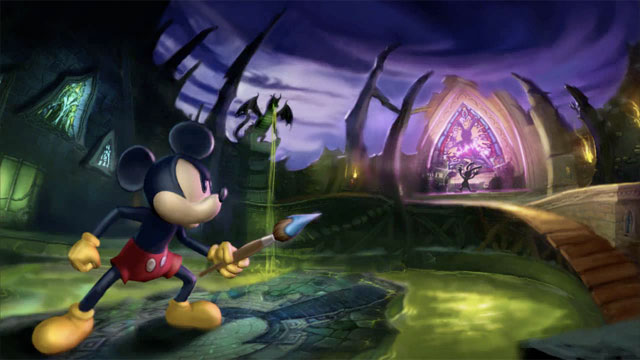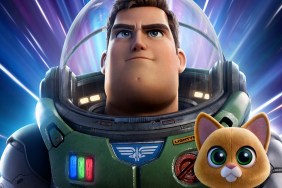Who's the leader of the club that's made for you and me? Usually, the answer is obvious: M-I-C K-E-Y M-O-U-S-E. Since Mickey's debut in 1928's Steamboat Willie, Disney has been not only a powerhouse, but an innovator and pioneer in animation, be it shorts like The Band Concert, syndicated television such as DuckTales and Chip 'N' Dale Rescue Rangers, or any of the multitude of Disney classic animated films like 1937's Snow White and the Seven Dwarves and last year's blockbuster Big Hero 6. From ABC to ESPN, the original Disneyland in Anaheim to the upcoming Disneyland Shanghai, the power of the magic can be felt far and wide.
In the realm of video games, however, Mickey Mouse is not the leader of the club. In fact, he's barely in the club. Disney Interactive Studios, the arm of Disney Consumer Products dedicated to gaming on console, computer, social, and mobile platforms, has seen far better days. Disney Interactive has posted losses in annual reports five out of six of the past years, and has seen the willing departure of co-president and former Playdom CEO John Pleasants and the unwilling departure of three development studios under the DI banner and 700 employees under its own roof.
Though we won't say we're in love, it's not all hellfire for these poor unfortunate souls. Out there, Disney Interactive has some options that may give them the bare necessities in 2015 and even—be prepared—set them up for a zip-a-dee-doo-dah year in 2016.
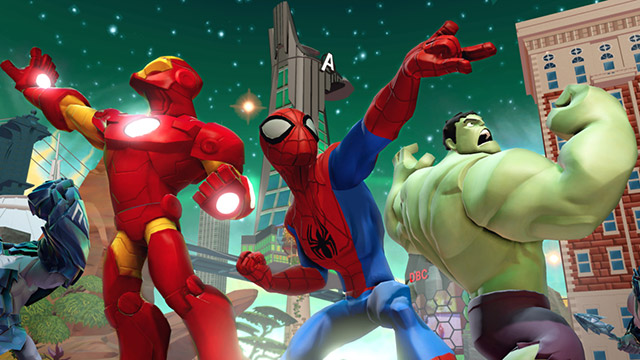
To Infinity and Beyond
Disney Interactive took a gamble of epic proportions when they released Disney Infinity in 2013. The Skylanders franchise had been doing fairly well since the launch of Skylanders: Spyro's Adventure in 2011, but the series was two-years old at that point, and in the eyes of many gamers, targeted nearly exclusively to kids and seen as more of a fringe series. Of course, with a family-oriented base, Disney hoped for just that as the figure-based game launched in August of that year. The gamble worked, and at the start of 2014, Disney announced that over three-million starter packs had been sold.
Last year, with Disney Infinity still rolling strong, Disney Interactive doubled down on its bet, releasing Disney Infinity 2.0: Marvel Super Heroes, bringing characters from The Avengers, Spider-Man, and Guardians of the Galaxy into the Toy Box to interact with other Disney characters. The launch of the new game, along with new figures from the Marvel franchises and other Disney properties, such as Brave, Lilo & Stitch, and Maleficent, breathed new life into the figure-based game, resulting in the studio's first profitable year in the past six years. Despite less-than-glittering reviews from critics, total sales for both versions are expected to breach the $1 billion mark.
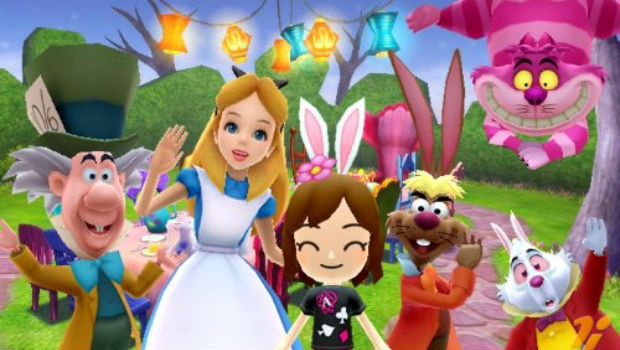
God Help the Outcasts
Unfortunately, not all of Disney Interactive's 2014 calendar year was as joyous as a Silly Symphony. In fact, aside from Disney Infinity 2.0: Marvel Super Heroes, Disney Interactive's biggest hits of the year have seen the studio largely on the sideline. Square Enix's Kingdom Hearts HD II.5 ReMIX primarily saw Disney Interactive as a distributor, with Square Enix taking development and production responsibilities, and Harmonix's Fantasia: Music Evolved uses Fantasia's concept as well as the character of Yen Sid, but little else from the Disney universe.
The developer's other major releases in 2014 slipped under the radar with little to no fanfare… or sales. Disney Interactive released a tie-in for its venture with Marvel titled Big Hero 6: Battle in the Bay and, as expected with tie-ins, flopped. Disney Interactive seemed to be able to predict this, minimizing damage by releasing the game only on the Nintendo 3DS and DS (stunning gamers in only the fact that new games are still being released on the DS). The studio also took care to prevent their brand image by placing both Hiro Hamada and Baymax into Disney Infinity 2.0.
Disney Interactive's other major release of the year got somewhat more attention if only for the fact that a really snazzy 3DS XL came out with the game. Disney Magical World attempted to mesh the life simulations of Animal Crossing: New Leaf with the wonderful world of Disney and winds up combining as well as peanut butter and Nutella—it works, but it's not nearly as impressive as one might think. (Sorry, Nutella fans.) The game, unsurprisingly, aims at younger gamers, but with Disney being a timeless love, older fans with more disposable income at the ready, turned out unimpressed, unless they scored the limited edition 3DS XL.
The developer may have hit pay dirt with Disney Infinity, but the fact remains that 2014 was the first profitable year for the studio since 2009. The studio still has plenty of red figures to recover from.
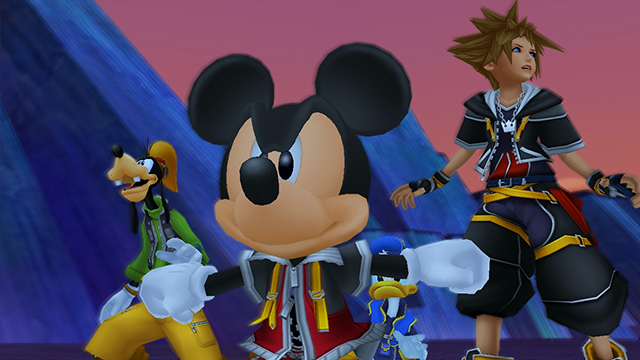
Wish Upon Some Stars
Last year may have turned a profit for Disney Interactive, but it doesn't mean the studio is out of the woods yet. (Or Into the Woods, as the case may be.) The electronic House of Mouse still needs to employ some survival tactics to create a second profitable year in a row and then maybe it will have some room to breathe.
It sounds odd, but one of the keys to survival for Disney Interactive is going to be Disney Infinity. Disney Interactive has already hinted that there would be a third version of the figure-based game aiming for 2015. Good. Cash in on it while figure-based games are still popular; and if amiibo are any indication, Disney Interactive still has plenty of time on that. Executive producer of Disney Infinity John Vignocchi has also hinted that the next Infinity may include characters from the Star Wars universe as well as the Indiana Jones franchise. Do it. Make that money, and build those coffers up. It may irritate the purists, but they're not trying to heal a sick studio. Ride that horse until it's time to put it to pasture.
Disney Interactive, however, cannot afford to become a one-trick pony while riding that horse. Disney's 2015 slate already holds potential powerhouses such as the live-action version of Cinderella, the buzzworthy Pixar film Inside Out, the George Clooney vehicle Tomorrowland, and the follow-up to Finding Nemo, Finding Dory. It would behoove Disney Interactive to make 110% sure that any video game tie-ins do not suck. While that may sound like basic knowledge, anyone who has played Wreck-It Ralph can tell you that Disney Interactive needs to be reminded of this.
When a video game about a movie about video game characters flops, it may be time to head back to basics. Disney Interactive needs to focus on quality, not quantity; not every movie needs a tie-in game. Pick and choose, then work diligently on what's been chosen. I'd much rather play a good
Finding Dory tie-in than play as George Clooney or Helena Bonham-Carter in Tomorrowland or Cinderella, respectively. If Disney Interactive doesn't want to hemorrhage money, it must produce games that star Disney's characters and will turn a profit, and not just games that are little more than mediocre beat-'em-ups like Big Hero 6: Battle in the Bay.
Kingdom Hearts III is anticipated to release at some point in 2015, and every time Square Enix opens its collective mouth, people eagerly wait for nuggets of information on the Final Fantasy/Disney mash-up series. Disney Interactive needs to stop being a wallflower and more aggressively remind gamers, “Hey, we're part of this venture too.” But the studio needs to do this without sacrificing the relationship built up with Square Enix. Ask any Nintendo supporter what the penalty is for pissing off Square Enix; Nintendo home consoles haven't seen a main Final Fantasy title since VI on the Super Nintendo. Disney Interactive should leverage some of the other arms of Disney to heavily promote Kingdom Hearts III even if this hasn't been their traditional practice. Even though this may come across as promoting someone else's product, it would get eyes on the projects that fully belong to Disney Interactive. Plus, cuts of a larger profit pie certainly couldn't hurt.
Utilizing the other arms of The Walt Disney Company is a tactic Disney Interactive generally does well and should continue to do into 2015. Many players had a chance to experience Fantasia: Music Evolved prior to release of the demo through various publicity events and demonstrations within the Disney Parks, as well as releasing demo videos via Disney's blogs and its YouTube channels. Attention to (quality) products is key, and it's a battle plan that all segments of The Walt Disney Company follow exceptionally well.

One Last Hope
Finally, one more suggestion that's equally balanced in good business, analyzing industry trends, and my own greedy, selfish heart. In 2013, Capcom and Wayforward Technologies, along with Disney Interactive in a publishing role, threw us back to 1989 to remind us that life was like a hurricane here in Duckburg. The release of DuckTales Remastered was a smash hit and a thoroughly-enjoyable game, with all the character and appeal of the original NES and Game Boy title in bright, vibrant colors and animation, including a more fleshed-out storyline and voice acting from the original cast of DuckTales. May I be so bold as to ask that Disney Interactive team up with Capcom and Wayforward again on another Disney Afternoon title?
Chip 'n Dale Rescue Rangers was released on the NES in 1990, and is still a great title to pick up and play alone or with a friend for some fantastic platforming action. Disney also revealed last year that the cartoon featuring Disney icons Chip and Dale, along with mechanical whiz Gadget Hackwrench, cheese-addict Monterey Jack, and his brave little buddy Zipper would be rebooted as a live-action/CGI film. Disney Interactive would be foolish to not ride the wave of nostalgia which has washed over the gamersphere as a whole and develop a remastered version of the 1990 Capcom classic. Both DuckTales and Chip 'n Dale Rescue Rangers had sequels on the NES, and both are exceptionally rare as the cartridges were released in the final days of the NES when most gamers had moved on to the Super Nintendo. Remastering those titles could let today's players enjoy them and find out what they had missed out on.
Disney Interactive has seen better times, but fate has seemed to begin to turn things around. Using shrewd business strategies, dedicating itself to quality over quantity, and not being content to stay in a background role, the people that make the games featuring our favorite animated pals could see their own Golden Age and renaissance. With that, along with a little faith, trust, and pixie dust, if they keep on believing, the dreams that they wish will come true.
